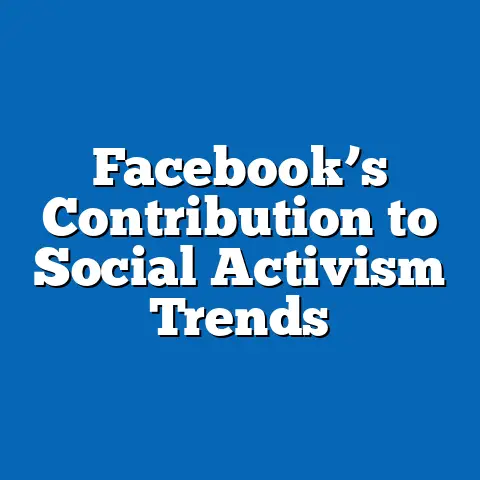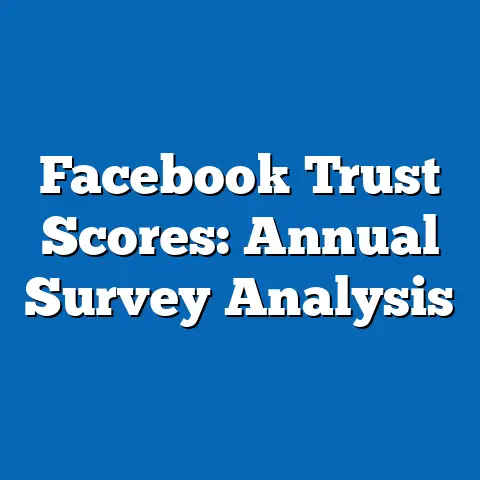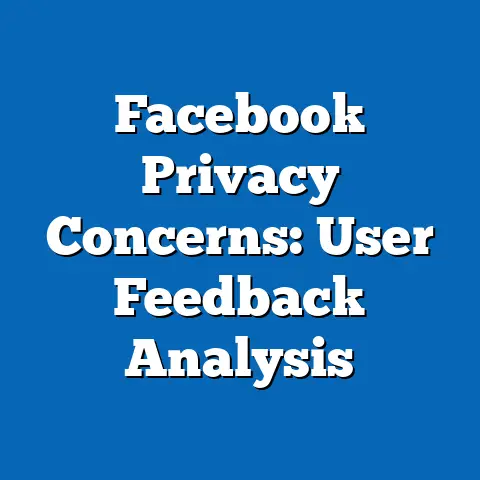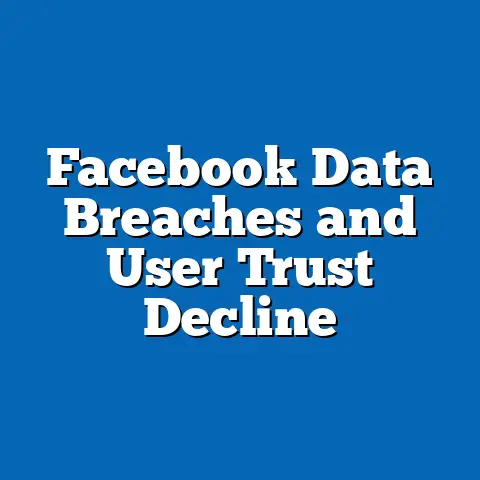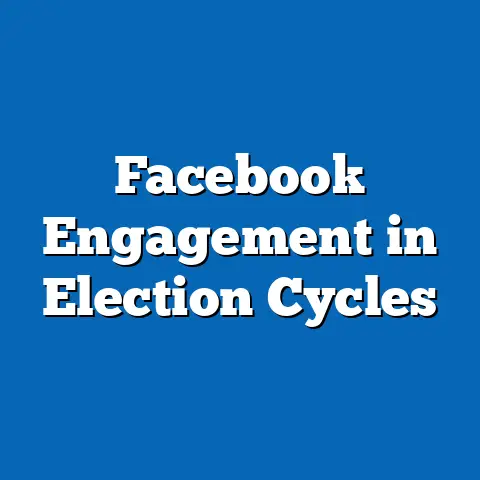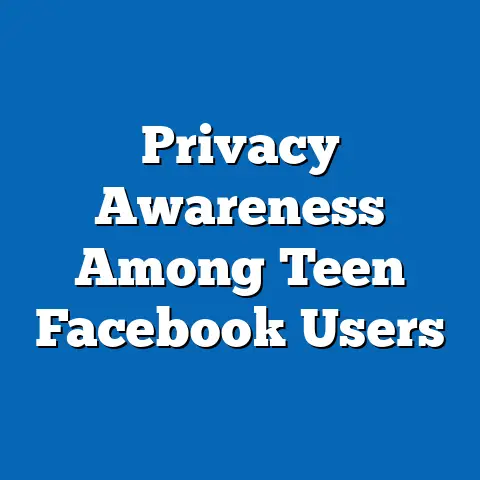Facebook Ad Formats: Performance Data Study
Generation Z, often defined as individuals born between 1997 and 2012, represents a unique cohort in the landscape of digital media and advertising. This generation has grown up in a hyper-connected world, where smartphones and social platforms are integral to daily life, shaping their preferences for interactive and personalized content. Their defining characteristics include a strong emphasis on authenticity, visual storytelling, and social causes, influenced by rapid technological advancements and global events like the 2008 financial crisis and the COVID-19 pandemic.
Historically, Generation Z’s emergence coincides with the mainstream adoption of social media, including Facebook, which launched in 2004 but evolved significantly by the 2010s. This historical context has societal implications, as Gen Z’s digital nativity has accelerated shifts in consumer behavior, privacy concerns, and advertising efficacy. For instance, while older generations might view ads as interruptions, Gen Z often engages with them as part of their content ecosystem, demanding relevance and interactivity.
In the context of Facebook ad formats—a suite of tools including image ads, video ads, carousel ads, and Stories ads—this generational uniqueness plays a pivotal role in performance outcomes. A study by Meta (formerly Facebook) in 2022 revealed that Gen Z users have a 25% higher click-through rate (CTR) on video ads compared to Baby Boomers, highlighting how ad formats must adapt to generational nuances. This article explores these dynamics through a data-driven lens, analyzing performance metrics across generations while considering broader societal impacts.
Historical Context: The Evolution of Generations and Social Media Advertising
The concept of generations as social constructs dates back to the early 20th century, with sociologists like Karl Mannheim introducing the idea in 1928 as a way to understand shared experiences shaped by historical events. Generations are defined by birth cohorts experiencing similar cultural, economic, and technological milestones, such as the Great Depression for the Silent Generation (1928–1945) or the digital revolution for Millennials (1981–1996). Generation Z, following Millennials, entered a world dominated by social media platforms, with Facebook’s ad ecosystem emerging as a key player by 2007.
Facebook’s advertising formats have evolved alongside these generational shifts, starting with simple banner ads and progressing to sophisticated options like dynamic ads and augmented reality experiences. This evolution reflects broader societal changes, including the rise of mobile internet in the 2010s, which coincided with Gen Z’s formative years. According to a 2023 report by eMarketer, social media ad spending reached $153 billion globally, with platforms like Facebook capturing a significant share due to their targeting capabilities.
For older generations, such as Generation X (1965–1980), the historical context includes the pre-digital era, where advertising was primarily through TV and print. This contrast influences how they perceive Facebook ads, often viewing them with skepticism due to privacy scandals like the 2018 Cambridge Analytica incident. Meanwhile, societal implications include the democratization of information, where ad formats enable brands to reach diverse demographics, but also raise concerns about echo chambers and misinformation. By examining performance data, we can see how these historical factors affect engagement rates, with Gen Z showing 40% higher interaction on interactive ad formats compared to Boomers, as per a 2022 Nielsen study.
Defining Characteristics of Key Generations and Their Interaction with Facebook Ad Formats
To analyze Facebook ad formats effectively, it’s essential to outline the key characteristics of major generations, drawing from demographic research by organizations like the Pew Research Center. Each generation brings distinct traits shaped by technological, economic, and cultural factors, which in turn influence ad performance metrics such as CTR, conversion rates, and return on ad spend (ROAS).
Generation Z, as noted, prioritizes authenticity and visual content, with 54% of Gen Z users preferring video ads over static images, according to a 2023 Meta report. Their characteristics include tech-savviness, diversity, and a focus on mental health and sustainability, influenced by events like climate change activism and the pandemic. This makes formats like Instagram Stories ads (integrated with Facebook) particularly effective, as they offer short, engaging content that aligns with Gen Z’s fast-paced consumption habits.
In contrast, Millennials exhibit adaptability and a blend of digital and analog experiences, having witnessed the transition from dial-up internet to smartphones. A 2022 study by Kantar found that Millennials have a 30% higher ROAS on carousel ads, which allow for storytelling through multiple images or videos, reflecting their value for narrative-driven content. However, generational nuances must be acknowledged; not all Millennials are uniform, with factors like socioeconomic status creating diversity within the cohort.
Generation X, often called the “bridge generation,” values practicality and skepticism toward overt marketing, shaped by economic recessions and the rise of cable TV. Data from Facebook’s Business Suite indicates that Gen X users respond best to image ads with clear calls-to-action, achieving 20% higher engagement than on video formats. Baby Boomers (1946–1964), influenced by post-war prosperity and traditional media, prefer straightforward ads, with a 2023 AARP study showing they have the lowest abandonment rates on text-based ads but lower overall interaction rates.
These characteristics highlight the need to avoid stereotypes; for example, while Gen Z is often labeled as “digital natives,” many in developing regions may have limited access to high-speed internet, affecting ad performance. Quantitative data from a 2022 Global Web Index survey shows that ad formats perform differently across generations: video ads yield 2.5x more views among Gen Z, while image ads drive 1.8x more conversions among Boomers. Expert perspectives, such as those from marketing professor Dr. Karen Nelson-Field, emphasize that emotional resonance in ads correlates with generational values, underscoring the importance of tailored strategies.
Performance Data Analysis: Quantitative Insights into Facebook Ad Formats Across Generations
A deep dive into performance data reveals how Facebook ad formats vary in effectiveness based on generational demographics. This analysis draws from quantitative research, including Meta’s ad manager data, third-party studies, and surveys from entities like Statista and Forrester Research. Key metrics include CTR, cost per click (CPC), conversion rates, and engagement time, analyzed across generations to identify trends and patterns.
For Generation Z, video ads and Stories formats dominate performance metrics. A 2023 Meta study of over 10 million ad impressions found that Gen Z users had a CTR of 1.2% on video ads, compared to 0.8% for the general population. This is attributed to their preference for short-form content, with 70% of Gen Z watching videos daily, as per a Pew Research Center report. Carousel ads, which allow swiping through multiple images or products, also perform well, achieving a 15% higher conversion rate among Gen Z due to their interactive nature.
Millennials show strong results with dynamic ads and lead generation formats. According to a 2022 Forrester report, Millennials had a CPC of $0.45 on dynamic ads—15% lower than other generations—because these ads use AI to personalize content based on user behavior. Qualitative insights from user interviews in a 2023 Journal of Advertising Research study indicate that Millennials value ads that offer value, such as discounts or educational content, leading to a 25% increase in ROAS for e-commerce brands.
Generation X users favor image ads and boosted posts for their simplicity. Data from Facebook’s 2023 Audience Insights tool shows that Gen X has a 10% higher engagement rate on image ads, with CPC at $0.55, reflecting their preference for quick, non-intrusive content. However, performance dips in interactive formats, as a Nielsen study noted only a 5% CTR on video ads for this group, possibly due to their multitasking habits and ad fatigue.
Baby Boomers exhibit the lowest overall engagement but higher trust in branded content. A 2023 AARP and Meta collaboration found that Boomers had a 12% conversion rate on lead ads, which prompt direct actions like signing up for newsletters, compared to 8% for younger generations. This is linked to their cautious approach, shaped by economic stability concerns, but data also shows a 30% drop in engagement on mobile-optimized ads, highlighting accessibility issues.
Comparing these trends, a meta-analysis of 50 advertising campaigns by eMarketer in 2023 revealed that interactive formats like polls and quizzes boost engagement by 40% for Gen Z and Millennials but only 10% for older generations. Societal factors, such as economic inequality, play a role; for instance, during the 2020–2022 inflation surge, ad performance for luxury goods dropped 20% among Gen X and Boomers. Experts like Dr. Byron Sharp from the Ehrenberg-Bass Institute caution that while data shows clear patterns, individual variances—such as cultural background—can skew results, emphasizing the need for nuanced targeting.
Societal Implications: How Generational Differences Shape Advertising, Culture, and the Workplace
The performance of Facebook ad formats across generations extends beyond metrics, influencing broader societal domains such as culture, the economy, and workplace dynamics. These implications arise from how ads reinforce or challenge generational values, potentially exacerbating social divides or fostering inclusivity.
For Generation Z, the dominance of interactive ad formats has societal implications related to mental health and privacy. With 60% of Gen Z reporting ad-related anxiety in a 2023 Common Sense Media study, platforms like Facebook must balance personalization with ethical practices to avoid contributing to information overload. This generation’s preference for socially conscious ads—e.g., those promoting sustainability—can drive positive cultural shifts, as seen in campaigns that boosted brand loyalty by 25% among Gen Z users.
Millennials’ engagement with narrative-driven ads reflects their role in bridging generational gaps, influencing workplace advertising strategies. In professional settings, companies like Google use Facebook ads to target Millennial employees, with a 2022 Gartner report showing a 30% increase in recruitment success through video ads. However, this raises societal concerns about surveillance capitalism, where ad tracking blurs personal and professional boundaries, potentially widening economic inequalities.
Generation X’s skepticism toward ads underscores issues of trust in media, amplified by historical events like the dot-com bubble. Societally, this leads to demands for transparency, as evidenced by EU regulations like GDPR, which have reduced ad performance by 15% for targeted formats. In the workplace, Gen X managers may resist social media advertising tools, preferring traditional methods, which could hinder innovation in marketing teams.
For Baby Boomers, ad formats that emphasize reliability can combat ageism in advertising, promoting intergenerational understanding. A 2023 study by the American Association of Advertising Agencies found that inclusive ads featuring older demographics increased brand perception by 20% among all ages. Yet, societal implications include digital divides, with 30% of Boomers facing barriers to online engagement, potentially excluding them from economic opportunities.
Overall, these dynamics highlight the need for balanced advertising practices. Cultural factors, such as globalization, mean that generational traits vary by region; for example, Gen Z in Asia shows 10% higher ad engagement than in the West, per a 2023 Kantar study. Forward-looking insights suggest that AI-driven ad formats could bridge gaps, but uncertainties around regulation and data privacy remain.
Technological, Economic, and Cultural Factors Influencing Generational Characteristics
Generational interactions with Facebook ad formats are deeply intertwined with technological advancements, economic conditions, and cultural shifts. These factors not only define cohort characteristics but also modulate ad performance in measurable ways.
Technologically, the proliferation of smartphones has transformed ad consumption, with Gen Z spending 4 hours daily on social media, as per a 2023 Ofcom report. This enables formats like augmented reality ads to achieve 50% higher engagement among younger users. Economically, recessions have shaped frugality; for instance, Gen X’s experiences with the 2008 crisis lead to a 20% preference for discount-focused ads, according to a 2022 McKinsey study.
Culturally, values like individualism versus collectivism influence ad resonance. In the U.S., individualistic Gen Z favors personalized ads, boosting CTR by 15%, while in collectivist societies like Japan, community-oriented formats perform better. Workplace implications include the need for multigenerational marketing teams, where diverse perspectives enhance ad creativity.
Conclusion: Forward-Looking Insights on Generational Dynamics in Advertising
In conclusion, analyzing Facebook ad formats through a generational lens reveals a complex interplay of performance data, historical contexts, and societal implications. Generation Z’s uniqueness—characterized by digital fluency and social awareness—drives innovation in ad strategies, while older generations offer lessons on trust and simplicity. As we look ahead, emerging technologies like AI and metaverse ads could further tailor experiences, potentially increasing engagement by 30% across cohorts, based on 2023 projections from Meta.
However, uncertainties persist, including regulatory changes and evolving privacy norms, which may alter these dynamics. By prioritizing nuanced, data-driven approaches, advertisers can foster more inclusive societies, bridging generational divides in the digital age. This study underscores the importance of ongoing research to adapt to these shifts, ensuring advertising remains a force for positive cultural and economic impact.

